Finger-sized fish make up the majority of Siev Phally’s morning catch. With a basin of water by her side, Phally meticulously sorts them from the shrimp, lowering her eyeglasses each time she inspects one.
During the wet season in Cambodia, rice fields are filled to the brim. This gives life to native species, which diversifies the plates of locals.
“This will be a good lunch,” Phally said, examining a juicy-looking fish.
The ingredient in question is the trey changwa plieng, also known as the Mekong flying barb. The small fish has one of the richest iron contents among Cambodian native fish species.
With the final fish in place, Phally stacked the two containers and carried them into her shop in Okralanh village in the Kralanh district of Siem Reap province. Looking down, she noticed a fish with its mouth agape and, sticking out of it, a tail.
Phally stopped to laugh.
“See,” she said, flicking the protruding tail. “Even the other fish know that this one is good for them.”
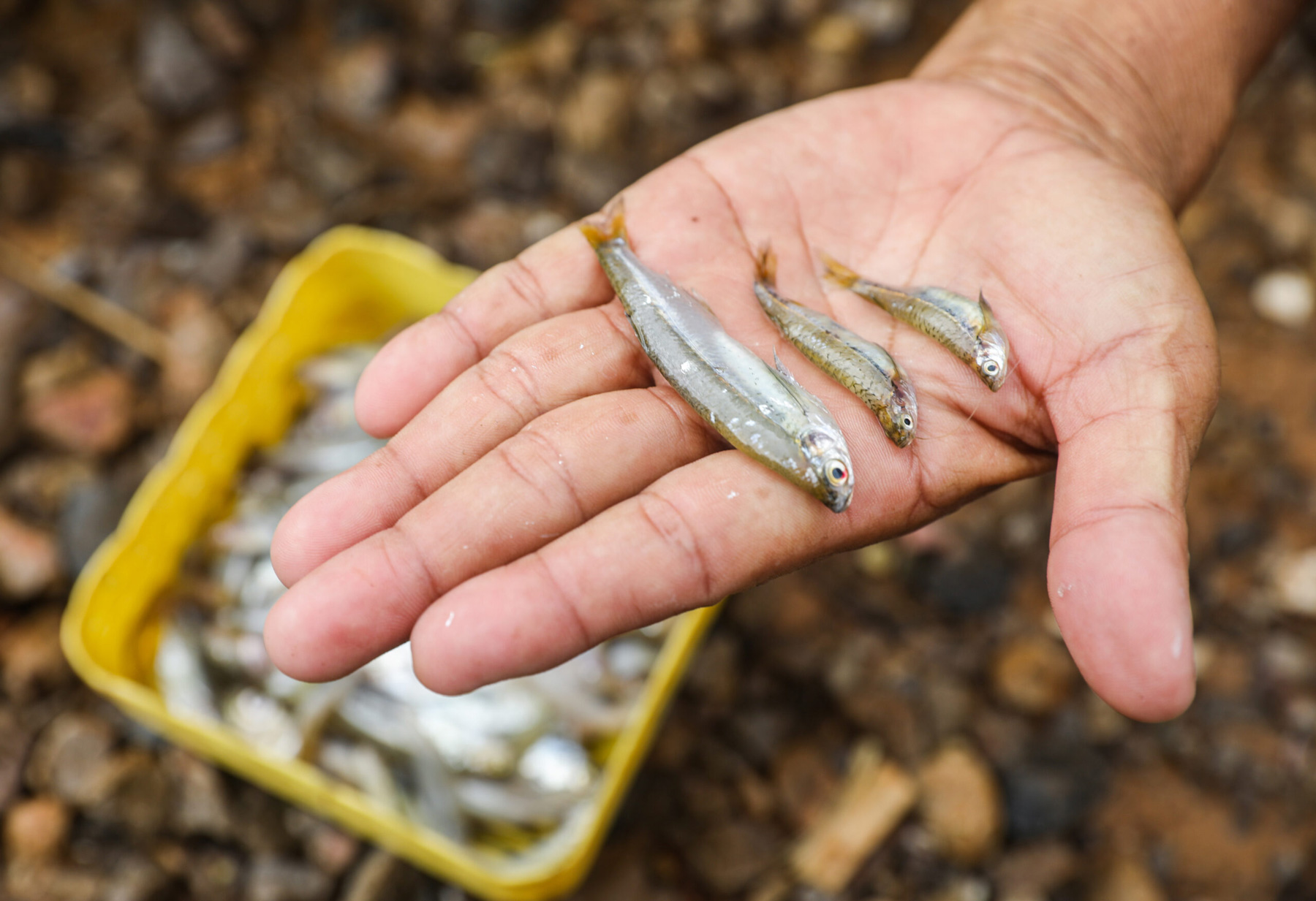
Iron deficiency is considered one of the most widespread nutritional disorders in Cambodia. According to the 2020 Global Nutrition Report, more than 30% of the Kingdom’s children under the age of five are still affected by stunting, a consequence of chronic undernutrition. Researchers in Southeast Asia believe this small fish could be the solution.
The flying barb and other native species are the focal point of an aquaculture research programme allowing rural, small-scale farmers to simultaneously grow two or more species in the same body of water. Shakuntala Haraksingh Thilsted, the global lead for nutrition and public health at WorldFish who is spearheading the polyculture pond research, suggests the use of these ponds could help change the narrative around hunger and malnutrition.
She believes malnutrition needs to be at the forefront of strategies for addressing hunger and her approach to tackling malnutrition among women and children received this year’s World Food Prize and the Arrell Global Food Innovation Award.
Thilsted’s work focuses on diversifying aquaculture across Cambodia and Bangladesh with the goal of improving people’s nourishment, rather than just filling their bellies. One of her approaches is implementing polyculture ponds across the Kingdom’s provinces.
In Siem Reap, small-scale farmers using polyculture ponds have been able to raise a variety of species at home. Farmers often opt to sell the larger, more marketable fish and eat the smaller, more nutritious fish.
“I want the narrative to change from feeding to nourishing,” Thilsted said. “If you go back to the 1960s, you had images of hungry and starving people. That’s not where we are today, we’ve been able to manage that.”
The first 1,000 days of life is a unique window of opportunity to establish the building blocks of a child’s neurological and physical development. Past this window, the effects of malnutrition can be irreparable.
Thilsted believes the benefits of addressing malnutrition directly in the kitchens of Cambodian families could trickle down to future generations.
“If the child isn’t getting the good stuff at six months, then you don’t have a healthy, well-nourished child. You don’t have a child who then goes on to perform well in school,” she explained. “A well-nourished woman giving birth to a well-nourished child [has] intergenerational benefits and thereby multiple benefits for national development.”
To date, Cambodia has avoided the ‘triple burden of malnutrition’ which is overnourishment, undernourishment and micronutrient deficiency. Many of the Kingdom’s children, however, suffer from the latter two.
“Cambodia’s in a single burden or maybe a double burden kind of place,” said Lawrence Haddad, executive director of Global Alliance for Improved Nutrition, who shared the 2018 World Food Prize for his work on maternal and child malnutrition. “It’s in the ‘not enough food’ and ‘not enough of the right kind of food’ stage. It doesn’t want to be in this triple burden situation because that’s like quicksand. Once you’re in that, it’s really difficult to get out.”
Haddad believes that, before the problem gets out of hand, the Cambodian government needs to encourage staple foods like rice, and support the production of nutritious foods while limiting the promotion of highly-processed fare.
“They will need to take the quality of their diet very seriously because, if it doesn’t, in 10 to 15 years’ time, poor diet will be the thing that’s driving the health system,” he said.
Because Cambodia currently faces two rather than all three burdens of malnutrition, Haddad said the country still can make the right choices.
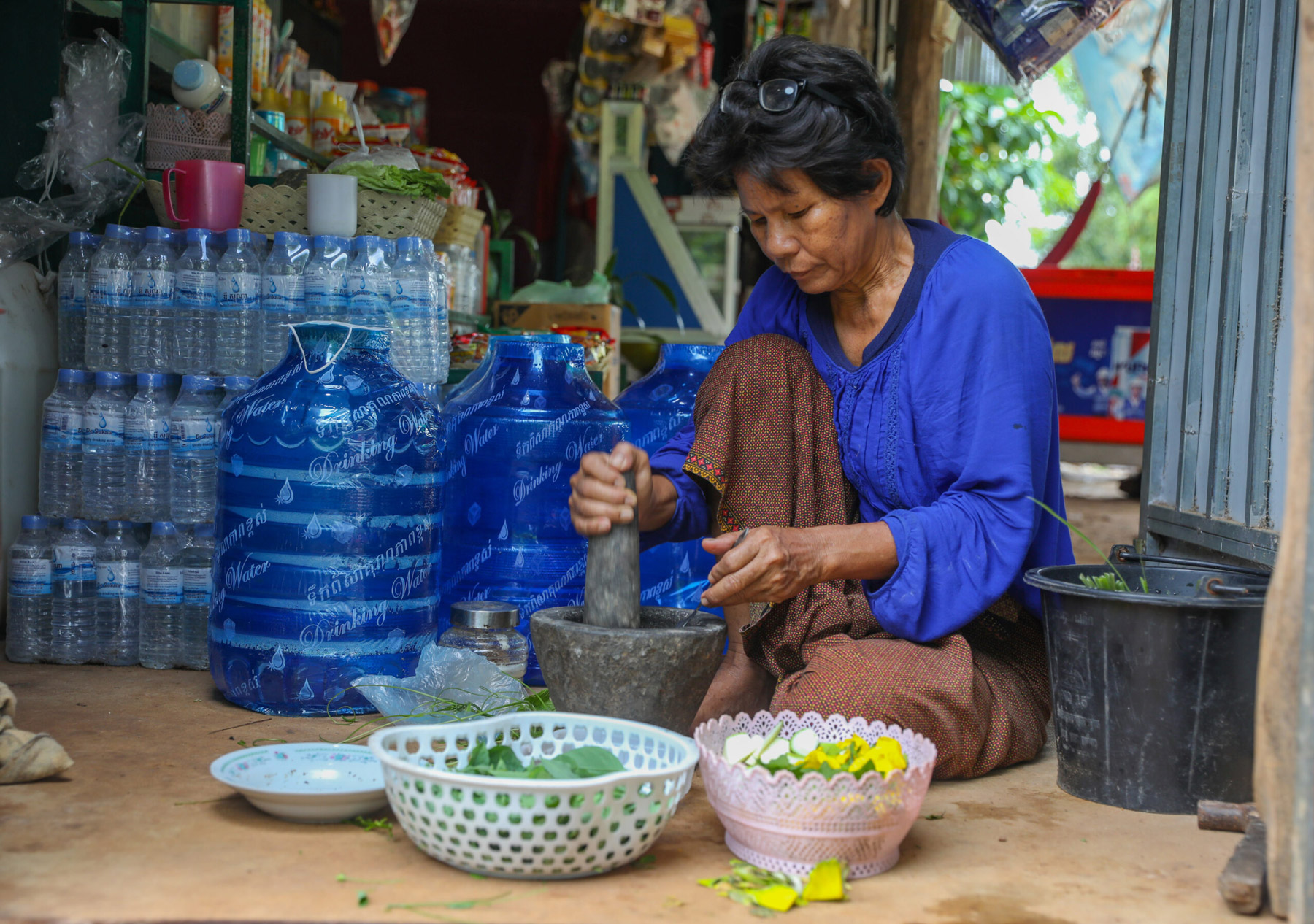
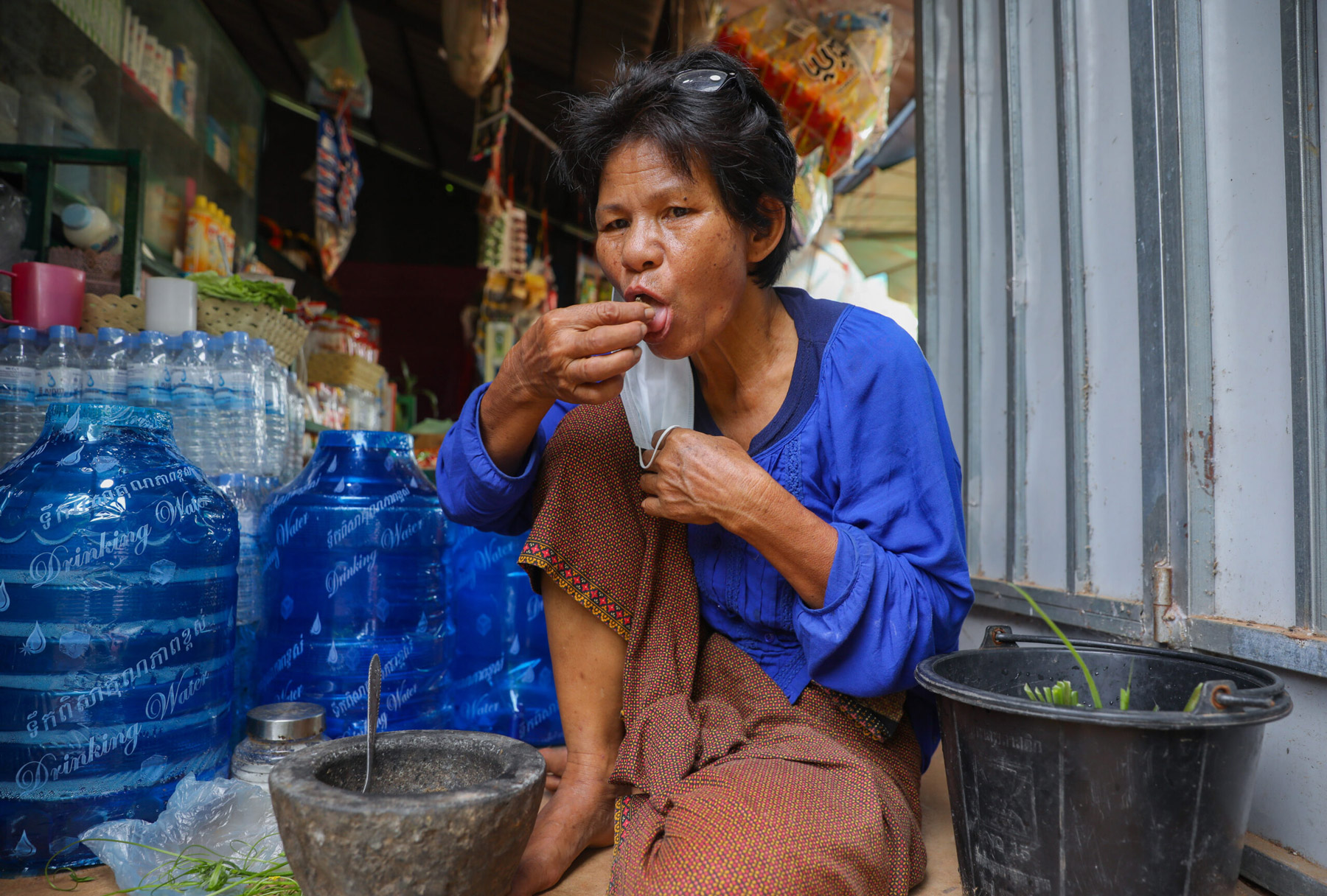
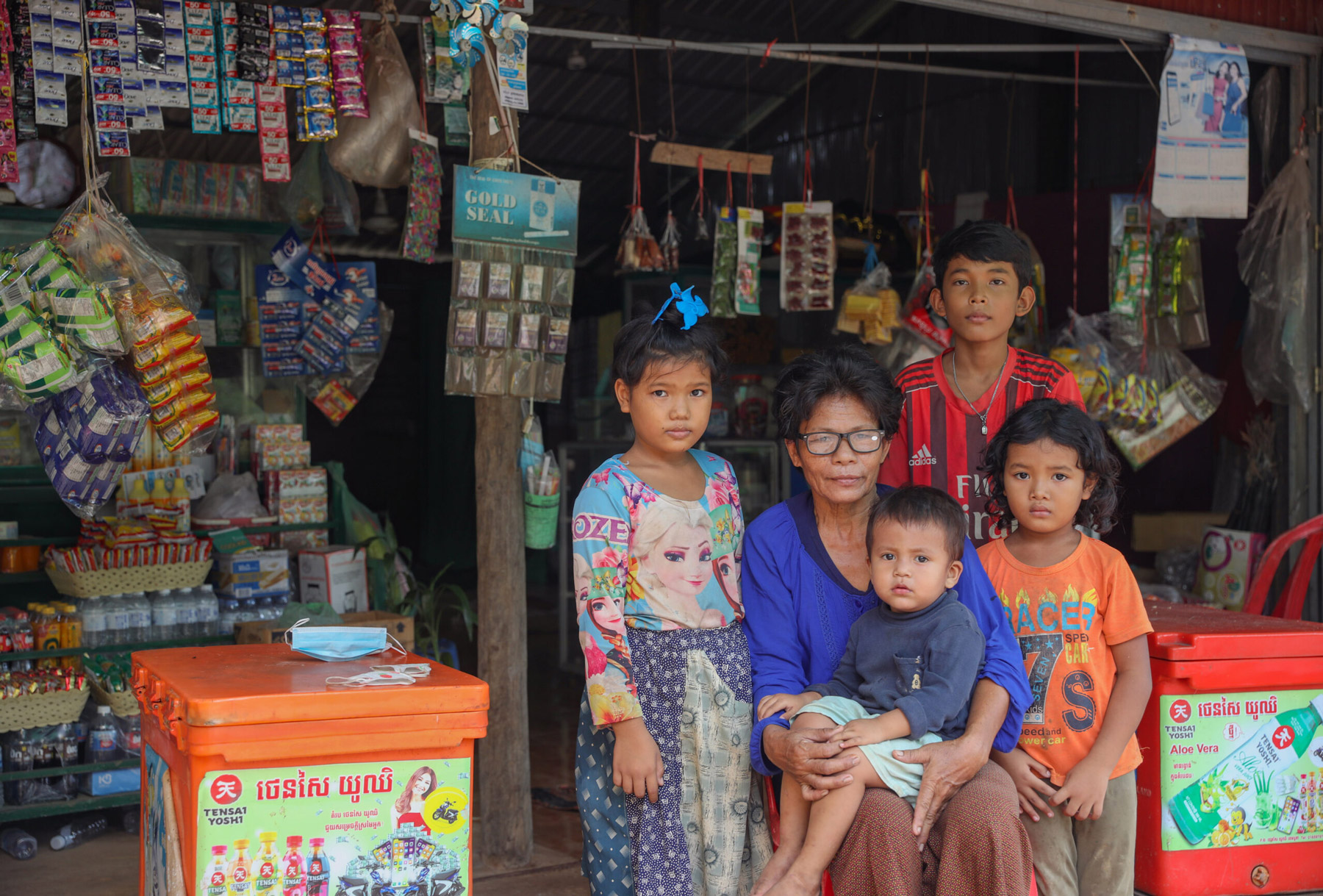
Rain had muddied the paths traversing the polyculture ponds in Chhay Seun’s backyard.
“Let’s see how hungry they are,” said Seun, a resident and businessman in Thymey village in the Sotrinukum district of Siem Reap province. Seun waited until the pond’s surface was still and smooth before tossing in fish food. Dozens of little mouths broke the water to gobble up the tidbits.
Seun is in the business of polyculture ponds. He grinds the small fish he catches from his pond, like the flying barb, into powder. During the wet season, 100 grams sells for 10,000 riels, the equivalent of $2.45. The powder’s value increases during the dry season, with the same usually selling for close to 15,000 riels, or $3.68.
Many of Seun’s customers are pregnant or parenting young children. Over the years he has been in business, the residents of Thymey village have learned about the fish powder’s nutrients.
Thilsted evaluated the nutritional value of 16 local fish in the Kingdom. She found that among the species, the Mekong flying barb, also known by its scientific moniker esomus longimanus, had the highest iron content. Thilsted’s study found when the entire fish is consumed in powder form, the meal could provide 45% of the daily median iron requirement for women, as well as other nutrients like calcium, Vitamin A and zinc.
Thilsted also found these smaller fish species have a lower market value, and thus are more accessible to impoverished communities. This means these low-value fish species are “likely to be the main or only animal food in the diet of the Cambodian population groups vulnerable to micronutrient deficiencies,” she said.
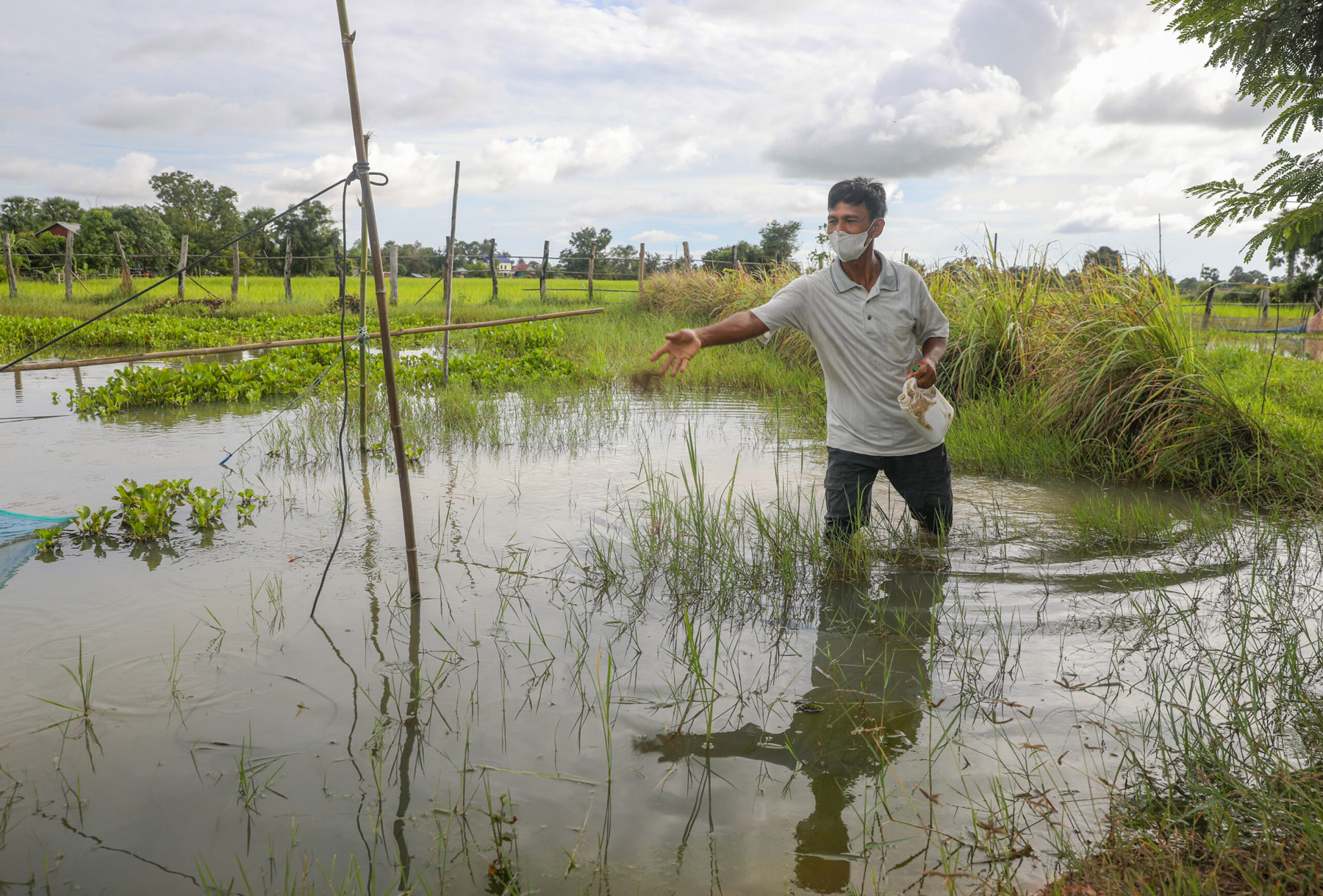
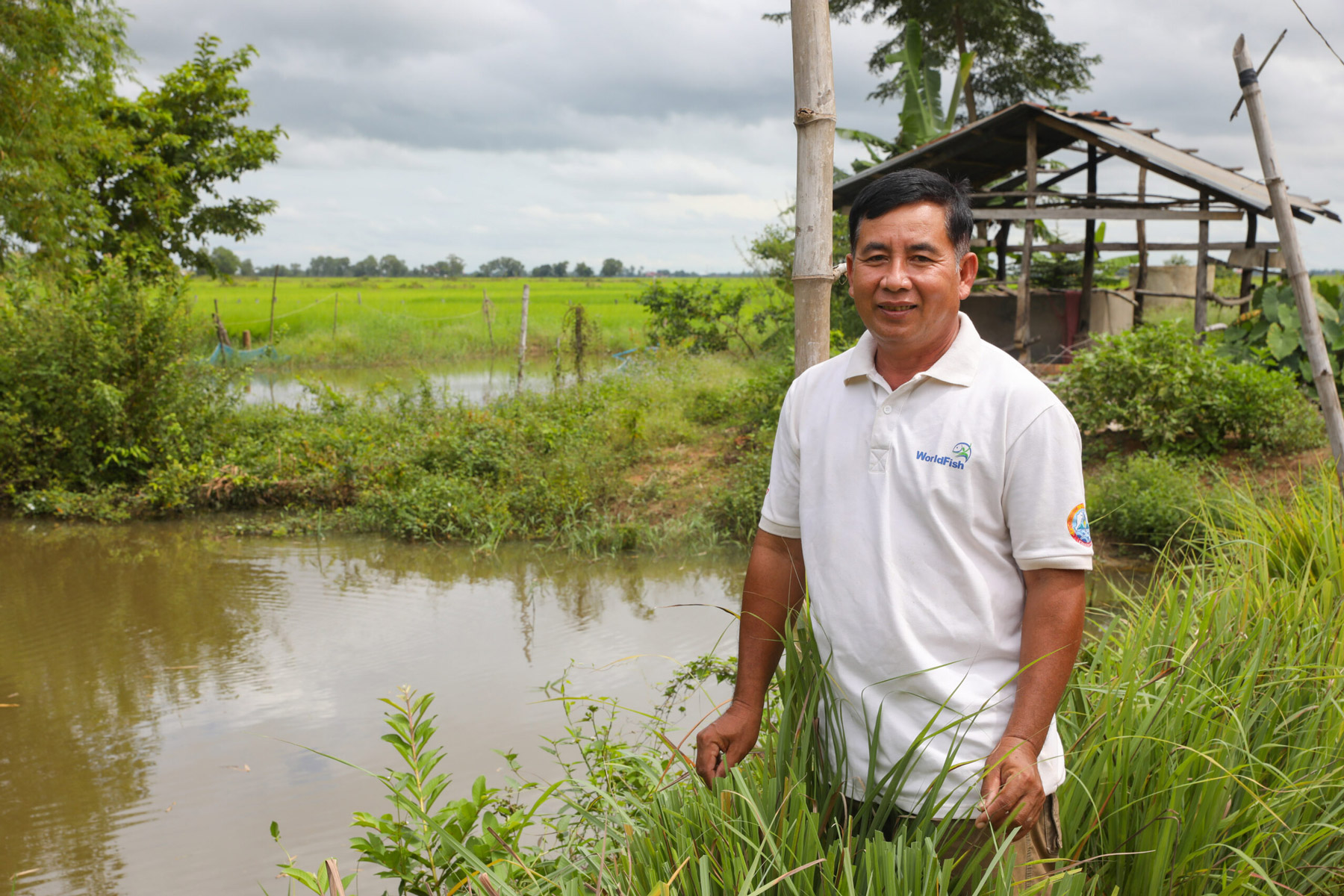
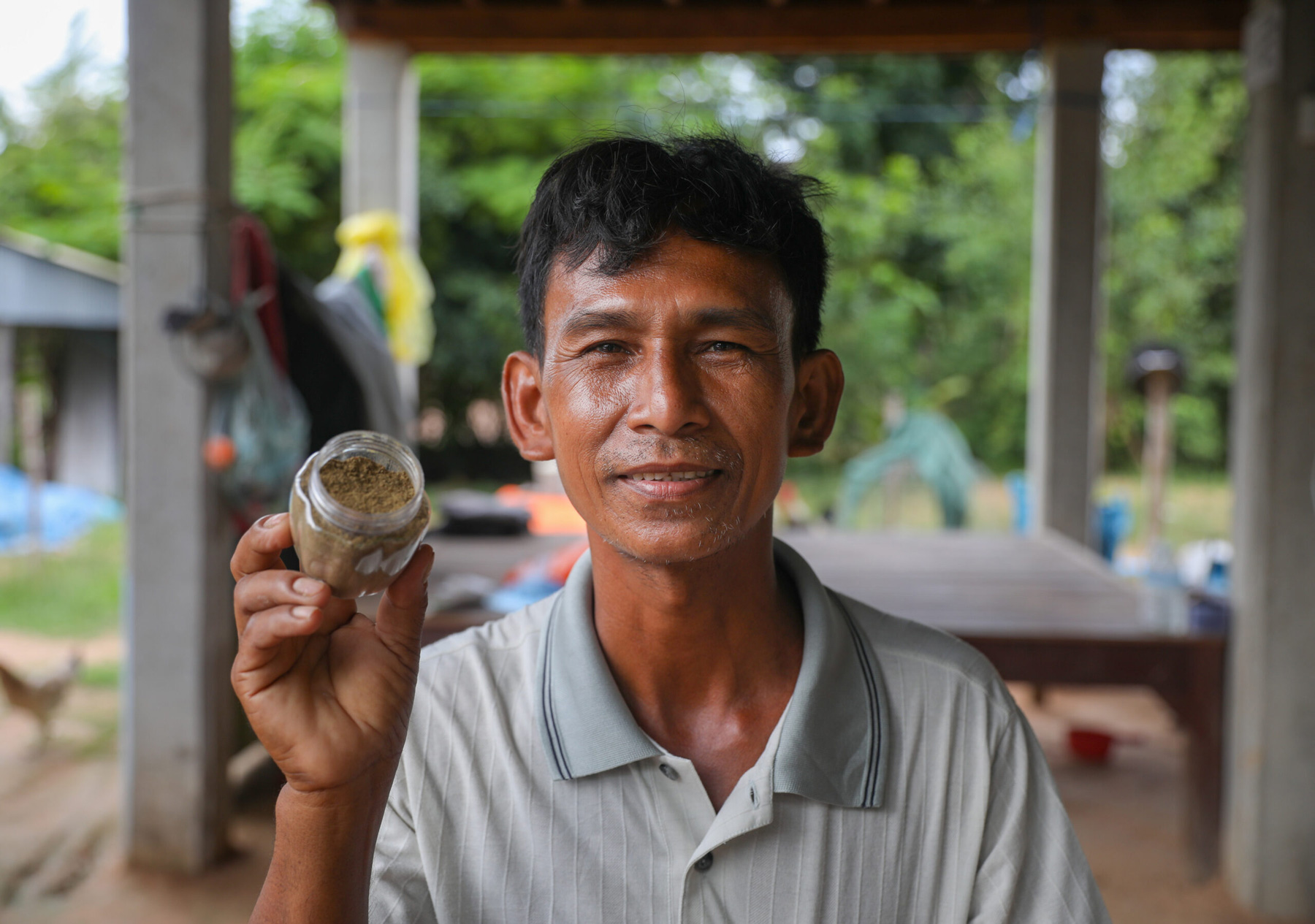
“It’s based on the concept of diversity. For me, diversity in all walks of life, in anything you do is fundamental,” Thilsted said. “If you increase the diversity of the foods on the plate that people eat, then you will improve the nutritional quality.”
Thilsted hopes aquaculture-focused projects, like the ponds in Thymey village, spearhead the Kingdom’s efforts to minimise malnutrition.
Like Thilsted, Modadugu Vijay Gupta has devoted decades to addressing hunger among the world’s small-scale farmers through advances in aquaculture.
“Integrating aquaculture with crops and livestock is critical because there needs to be a holistic approach to small-scale farming,” said Gupta, an award-winning aquaculturist who won the 2005 World Food Prize for similar work developing aquaculture among rural farmers across Asian nations including Cambodia, Vietnam, Thailand and Laos. Among the most critical aspects of the work by Gupta and Thilsted is encouraging farmers to become self-sufficient.
“If I get something for free, I don’t know the value of it,” Gupta said. “You cannot address all of the problems small-scale farmers face with subsidies because it sends the wrong message. We want to create a sense and structure, of self-reliance, both on the community and country level.”
The development of these aquaculture projects is meant to address the UN’s second Sustainable Development Goal to “end hunger, achieve food security and improve nutrition and promote sustainable agriculture.”
Gupta grinned at his own adaptation of a proverb: “We’ve all heard this one. ‘If you give a man a fish, you feed him for a day. If you teach him to fish, you feed him for a lifetime.’ But what if you train a family to grow their own fish? Well, then everyone eats.”
Regardless of the research type or preferred aquaculture method, Thilsted, Gupta and Haddad agree that any proposed solutions to hunger and malnutrition need to adapt to changing climates.
“It’s not enough just to improve nutrition if you’re wrecking the environment. It’s not enough to generate livelihoods if you’re adding to greenhouse gases,” Haddad said. “You need solutions that are good for nutrition, good for livelihoods and good for the environment… small polyculture fish solutions are really good for that.”
A study co-written by Thilsted on healthy diets claimed “the future of fisheries is closely tied to the impacts of climate change such as rising seawater levels and temperatures, water scarcity, and food price volatility.”
“With climate change, we are seeing more erratic flood patterns, longer periods of droughts and rains. The system is not constant,” Thilsted said. “It must be really, really difficult as a farmer, as a rural person, to know how to deal with changes in the systems.”
In Thymey village, the drastic changes between annual seasons make it difficult for Seun to plan his fish powder business.
“I get very nervous when people try to order ahead and in large quantities because I never know if we will be in drought or if the fish yield will be bad,” he said. “It’s very hard to predict and every year has been so different.”
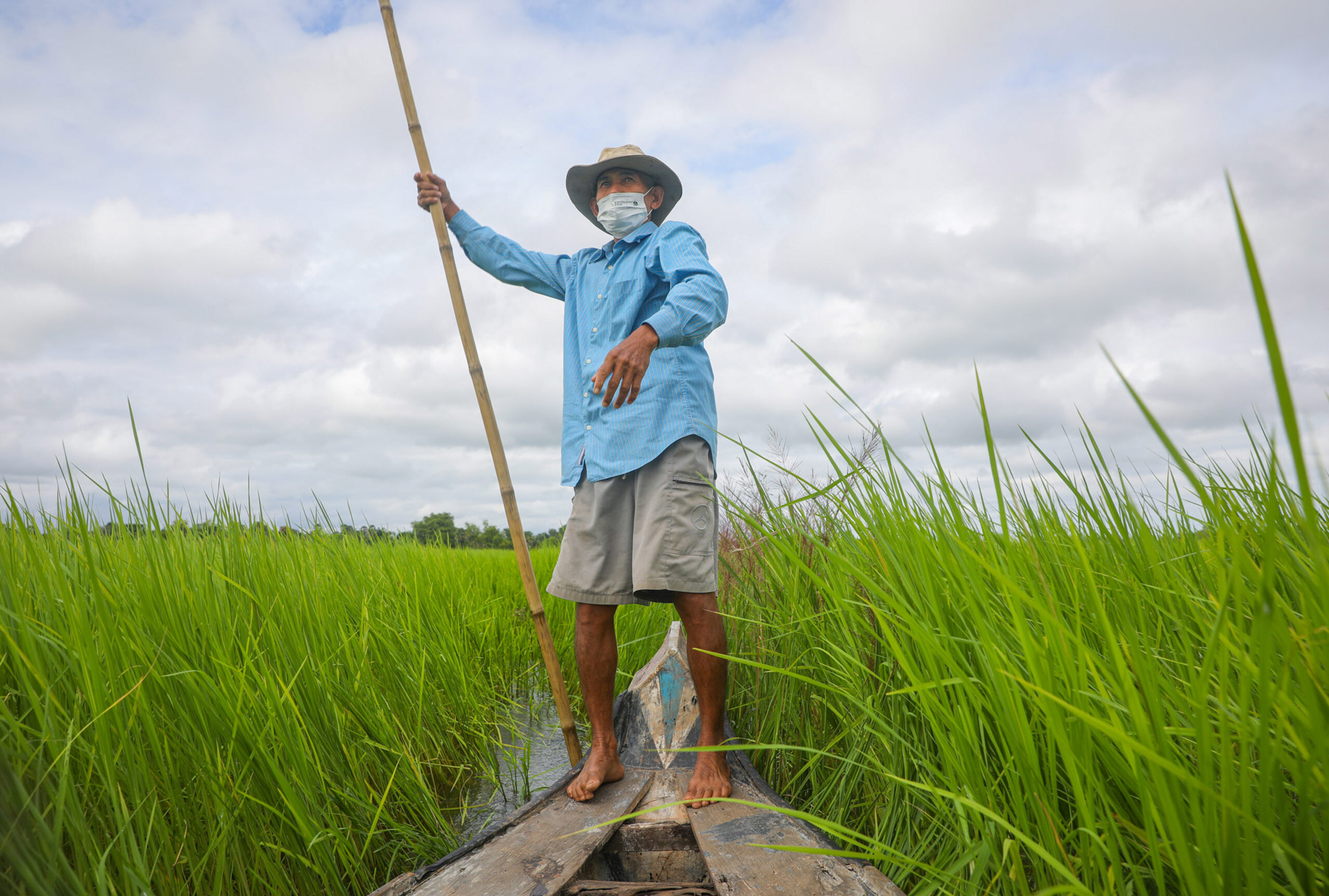
It must be really, really difficult as a farmer, as a rural person, to know how to deal with changes in the systems
With the future of fisheries intrinsically linked to climate change, Thilsted said humans will be forced to grow and think differently about sustainable food sources. As the study she co-wrote states, this could be “a good opportunity to apply a nutrition lens going forward.”
In Okralanh village, the steady thud and crunch of Phally’s grinding bowl pierced the sleepy atmosphere. Within minutes, the native fish were reduced to a fine dust. A lingering smell was the only evidence that moments ago the pile of powder was a stack of fish.
“We eat this as often as we can, whenever we have a good catch,” said Phally, who is responsible for four of her grandchildren. “I know this will help with their development.”
As the kids wait patiently for lunch, swinging on hammocks and tending to the storefront, she combined a pot of steaming rice with a plate of neatly cut vegetables and, of course, the bowl of finely crushed fish powder.
“Lunch time,” Phally said.


